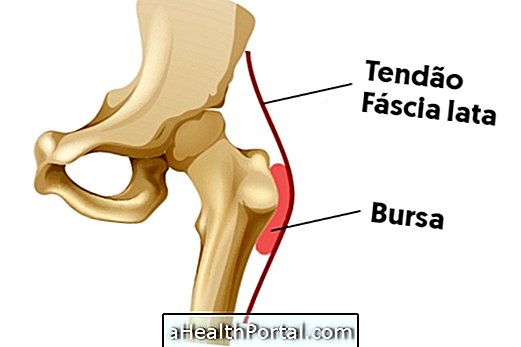Teratoma is a type of tumor that arises due to the proliferation of germ cells, which are cells found only in the ovaries and testes, responsible for reproduction and capable of giving rise to any tissue of the body.
Thus, it is common for teratoma to arise in the ovary, being more frequent in young women. Ovarian teratoma may not cause any symptoms but may also cause pain or increase in abdominal volume, depending on its size or if it affects structures around the ovary.
Ovarian teratoma can be differentiated into:
- Benign teratoma : also known as a mature teratoma or dermoid cyst, is the type of teratoma that arises in most cases, and its treatment is done with its removal by surgery;
- Malignant Teratoma : also called an immature teratoma, is a type of cancer that can spread to other tissues of the body, and appears in about 15% of cases. Treatment is done with removal of the affected ovary and chemotherapy.
When it develops, a teratoma forms a tumor composed of several different types of tissues, so in its structure there may be skin, cartilage, bones, teeth and even hairs. Understand better how a teratoma forms and its characteristics.

Main symptoms
In many cases, ovarian teratoma does not cause symptoms, and can be discovered accidentally on routine exams. When symptoms appear, the most common is abdominal pain or discomfort, especially in the lower abdomen,
Other signs that may arise are uterine bleeding or belly growth, usually when the tumor grows too much or produces fluid around it. When the teratoma grows too far out of the ovary, there may be a twisting or even rupture of the tumor, which causes severe abdominal pain, and care is needed at the emergency room for evaluation.
Generally, teratoma, like other cysts in the ovary, does not cause infertility unless it causes extensive involvement of the ovary, and in most cases the woman can get pregnant normally. See more about the types of cyst in the ovary and symptoms they can cause.
How to confirm
To confirm the teratoma in the ovary, the gynecologist may request tests such as abdominal ultrasound, transvaginal ultrasound or computed tomography, for example.
Although the imaging tests show signs of tumor type, confirmation of whether it is benign or malignant is done after examination of the tissues in the laboratory.
How is the treatment done?
The main form of treatment of teratoma is the removal of the tumor, preserving the ovary whenever possible. However, in some cases, it is necessary to remove the affected ovary completely, especially if there are signs of malignancy or when the ovary was severely compromised by the tumor.
Most of the time, the surgery is done by videolaparoscopy, a more practical, fast method that makes recovery quicker. However, if there is suspicion and cancer or the teratoma is very large, conventional open surgery may be required.
In addition, if the presence of cancer is confirmed, the doctor may indicate chemotherapy to optimize treatment. Check how the treatment is done for ovarian cancer.





















